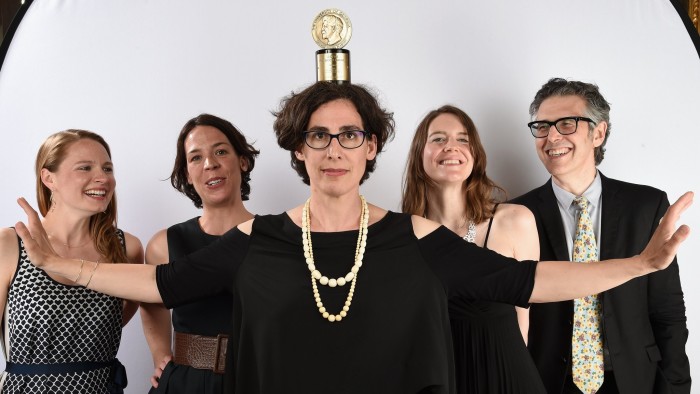A new medium that harnesses the ancient power of storytelling

Simply sign up to the Life & Arts myFT Digest -- delivered directly to your inbox.
Storytelling, our oldest art form and a fundamental way of communicating, is finding new life through our newest technologies, such as smartphones and tablets. More than 70m people have downloaded Serial, the 12-part podcast that analysed the murder of Baltimore high school student Hae Min Lee. For months after Serial was released last year, it was difficult to avoid overhearing discussions of whether Adnan Syed really did strangle his ex-girlfriend and bury her body in a local park. It was the first podcast to achieve 5m downloads, turning a spotlight on this unassuming medium with a slightly nerdy reputation. The media heralded a “podcast renaissance”.
Serial’s unquestionably addictive content and clever format was not particularly new — good news for people looking for other compelling real-life narratives to fill a void until the next season is broadcast in the autumn. But it satisfied an ancient, instinctive appetite for suspense-filled storytelling and mixed it with a distinctive and innovative audio aesthetic, a winning combination that has been honed over many years by a number of US public broadcasters.
Serial is the offspring of This American Life, a 20-year-old weekly Chicago radio show that has been available as a popular podcast since 2006. In hour-long episodes, one narrator, usually Ira Glass, guides listeners through a variety of true stories based around a theme — anything from amusement parks, to strange coincidences, to psychopaths. It applies tools of journalism and the structure of a play (a prologue, several acts) to true stories taken from the everyday, splicing studio narration with field recordings and music. Though it sounds simple, this is a formula that has proved to be one of the most successful within the podcast genre, evident in the popularity of its spin-offs and imitators, as well as its own continuing ability to hit 1m downloads a week.
The fact that people have flexibility in how and when they choose to listen to a podcast gives a programme creative freedom. Sound can be used more experimentally and subjects made more challenging. Similar to This American Life, Radiolab interweaves anecdotes and factual information but to explore a larger scientific or philosophical problem. Ever been curious about whether colour is created entirely in our minds? Isaac Newton stuck a knife into his eye to try and find out. Saving us the trouble, Radiolab considers the question by adding that story to some about the superior rainbow of colours that certain animals can see; and then to the strange fact that Homer’s odd descriptions of colour in the Iliad (“violet hair”, “wine-dark sea”) suggest that he didn’t seem to recognise blue. Its idiosyncratic, musical soundscape — full of slurps, stutters, awkward pauses, moments of confusion — uses audio to its full advantage to complement the content.
This kind of crafted informality, one that belies careful planning and intricate editing, is found across the medium. In Serial, the presenter, Sarah Koenig, and listener the unfurl the plot together; the authenticity of the story is emphasised, patronisation studiously avoided.
WNYC’s latest hit, Death, Sex & Money, probes the eponymous subjects in a similar way. Empathetic host Anna Sale gently coaxes stories from guests, often by talking about her own life (such as how an octogenarian senator counselled her into staying with her boyfriend), while also drawing on testimonies and voicemails left for her by the show’s listeners. “It really came down to having a show that goes right at the things that shape our lives and that we have the most difficulty navigating — that I was having the most difficulty navigating,” she has said. “It was just sort of a hunch that I would want to listen to a show like this.”
Podcast
Behind the podcast renaissance

Podcasts have existed for more than 10 years but have recently seen a surge of interest, spurred by the success of the true crime drama Serial, which has been downloaded more than 70m times. What is driving the so-called “podcast renaissance”? How are they different from radio shows? And do they pose a threat to traditional broadcasting?
Confessions revealed live on stage are well-suited to the medium. The popularity of events such as The Moth, where true stories are told without notes to a crowd, are proving that storytelling can make powerful listening even in its rawest form. Begun as an attempt by the novelist George Dawes Green to recreate the idle evenings he spent exchanging stories on porches in Georgia, it is now hosted in venues across the world. Whether told by brave members of the audience, or professionals such as Adam Gopnik or Salman Rushdie, the best tales go into the podcast. There are also a number of British versions of The Moth such as True Story and Spark London, in which speakers attempt to captivate, amuse and provoke spectators with scenes from their own lives.
Podcasts are a haven for real-life drama, drawing personal revelations from people like a moth to a flame. Although listening to one appears outwardly to be a solitary activity, shows such as these affirm our universal experiences and encourage greater curiosity about the wider world.
FT technology editor Ravi Mattu discusses the rise of the podcast with literature professor Sarah Churchwell, veteran podcaster Helen Zaltzman and Mark Friend of BBC Radio online, ft.com/culturecast
Comments